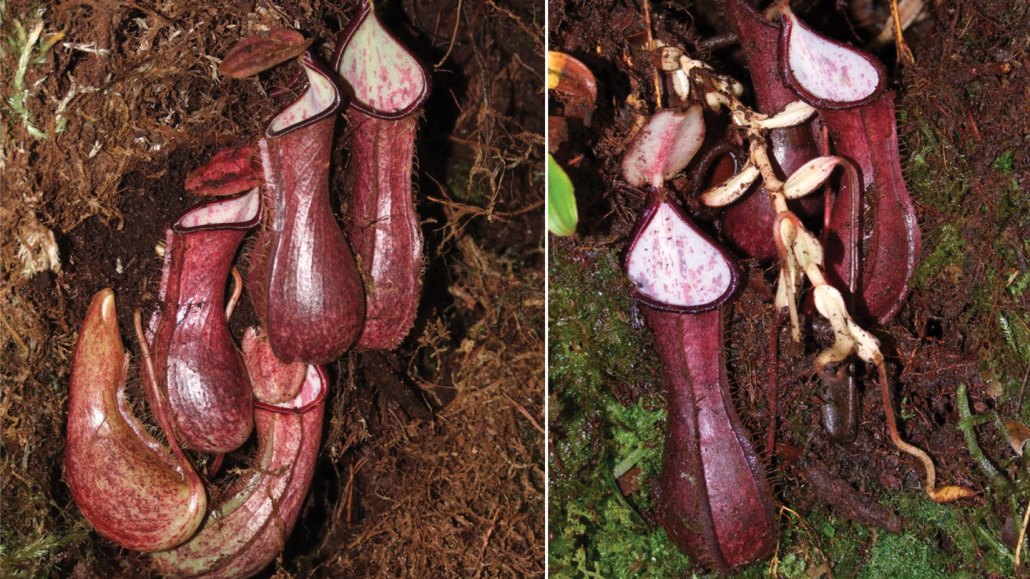
A pitcher plant discovered in a rainforest in Borneo uses underground traps grown under a moss mat (left) and in a cavity under tree roots (right) to catch prey.
M. Dančák et al/Phytokeys 2022

A pitcher plant discovered in a rainforest in Borneo uses underground traps grown under a moss mat (left) and in a cavity under tree roots (right) to catch prey.
M. Dančák et al/Phytokeys 2022